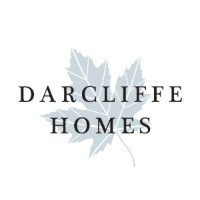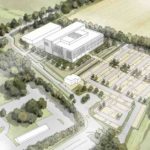Karen Jones (pictured left) and Deena Radi (pictured right), in Blandy & Blandy’s planning & environmental law team, discuss the proposed modifications to the Bracknell Forest Local Plan (BFLP) and their implications.
Background
The Bracknell Forest Local Plan (BFLP) covers the strategy for the growth of the borough from the date it is adopted until 2037. Once the plan has been adopted and implemented, it will replace the previous Local Plan, along with the Core Strategy (2008). The proposed Local Plan sets out the locations which will have new homes, businesses and other facilities built within the next 15 years.
The BFLP is divided into two sections. The first covers all strategic matters and sets out policies for the overall strategy to meet specific needs. The second section contains all non-strategic matters, including the criteria which all planning applications will be considered against.
This Local Plan only covers the borough’s plans up until 2037, but it is important to note that it will also influence the next plan period, with the next local plan due in 2044. For this reason, proposals and modifications now can have long term consequences, and for some sites will merit strategic review of its long-term prospect for development.
The public were previously consulted on the plan in its entirety, but this consultation period has come to an end. The plan was found to be ‘sound’, in accordance with the National Planning Policy Framework (NPPF). However, the public are now invited to comment on the two proposed main modifications.
The proposed main modifications and the inspectors’ concerns
The two proposed main modifications include the removal of the proposed Garden Village at Jealott’s Hill from the borough’s 15-year vision, along with the removal of three sites opposite Pope’s Meadow in Binfield and Lower Church Road in Sandhurst.
The proposed Garden Village at Jealott’s Hill lies on Green Belt land, and was expected to provide roughly 2,000 homes, a neighbourhood centre, a primary school, a science and innovation park and a publicly accessible green space.
It was found by planning inspectors, Louise Nurser and David Troy, that the proposals put forward were ‘unsound’ for various reasons.
Under paragraph 35 of the NPPF, plans put forward are ‘sound’ if they are positively prepared, justified, effective and consistent with national policy. The council’s plans to alter the Green Belt area boundaries for the development to be carried out at Garden Village were not found to be justified.
This was because the ‘exceptional circumstances’ required under the NPPF Green Belt provisions could not be shown in relation to the proposed development. Moreover, it was found that the exceptional circumstances advanced did not outweigh the harm that would potentially be caused to the Green Belt area.
Furthermore, the council had failed to show that there was a lack of suitable alternatives, and needed to do so to ensure that other potential locations available for the development of new housing without impacting Green Belt areas were not available.
In particular, the proposed science and innovation park was found to have a lack of certainty in the likelihood of it coming together in the desired sense. The inclusion of it in the proposals as a response to a potential future need that may or may not arise, as opposed to a current need was not acceptable.
The second proposed main modification is the removal of three sites opposite Pope’s Meadow, which account for around 50 new homes across the three sites. This includes Murrell Hill Lane (the land opposite Pope’s Meadow) and two sites located on Lower Church Road in Sandhurst.
It was found that development at these locations may have undesirable effects on the nearby designated heritage assets, Pope’s Manor, and Forecourt Wall to north-west of Pope’s Manor. These are Grade II heritage assets, meaning both listed buildings are of special interest.
There have been concerns regarding the borough’s ability to meet housing and planning needs up to 2037. The release of land from the Green Belt is not favoured by politicians.
However, it has been asserted that the removal of the plans to develop these sites and the loss of these proposed new homes will not threaten the borough’s aim to meet planning and housing needs until 2037 and will not adversely affect the wider plan.
The views and input of the public are being sought in relation to the proposed main modifications, but these must be focussed on whether they are in line with legal requirements and whether they meet the Local Plan requirements. Further hearings are unlikely to be held unless the Inspectors consider them essential.
The consultation period
The consultation period is open from 10am on October 31, 2023 to 11:59pm on December 12, 2023. During this time, the public are invited to comment on the proposed main modifications as set out above.
After the consultation period has come to an end, all comments submitted by the public will be passed on to the planning inspectors, who will review the comments and take them into consideration in their final report.
The final report will set out the inspectors’ recommendations and the reasons for them and will be considered by the council. It is not binding but the council may not adopt an unsound plan. Following the anticipated approval by the council, the Local Plan can then be adopted and implemented.
Comments on the modifications can be made on the Bracknell Forest Council’s website. More information on responding to the consultation can be found here.
For further information or legal advice, please visit www.blandy.co.uk.
© Thames Tap (powered by ukpropertyforums.com).
Sign up to receive our weekly free journal, The Forum here.





































